Near-atomic resolution visualization of human transcription promoter opening
- PMID: 27193682
- PMCID: PMC4940141
- DOI: 10.1038/nature17970
Near-atomic resolution visualization of human transcription promoter opening
Abstract
In eukaryotic transcription initiation, a large multi-subunit pre-initiation complex (PIC) that assembles at the core promoter is required for the opening of the duplex DNA and identification of the start site for transcription by RNA polymerase II. Here we use cryo-electron microscropy (cryo-EM) to determine near-atomic resolution structures of the human PIC in a closed state (engaged with duplex DNA), an open state (engaged with a transcription bubble), and an initially transcribing complex (containing six base pairs of DNA-RNA hybrid). Our studies provide structures for previously uncharacterized components of the PIC, such as TFIIE and TFIIH, and segments of TFIIA, TFIIB and TFIIF. Comparison of the different structures reveals the sequential conformational changes that accompany the transition from each state to the next throughout the transcription initiation process. This analysis illustrates the key role of TFIIB in transcription bubble stabilization and provides strong structural support for a translocase activity of XPB.
Figures

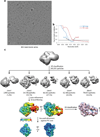
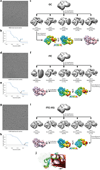
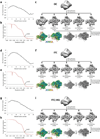

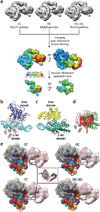

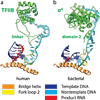




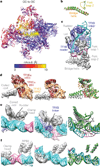


Comment in
-
Structural biology: Snapshots of transcription initiation.Nature. 2016 May 19;533(7603):331-2. doi: 10.1038/nature18437. Epub 2016 May 11. Nature. 2016. PMID: 27193677 Free PMC article.
References
-
- Roeder RG. The role of general initiation factors in transcription by RNA polymerase II. Trends Biochem. Sci. 1996;21:327–335. - PubMed
-
- Goodrich JA, Cutler G, Tjian R. Contacts in context: promoter specificity and macromolecular interactions in transcription. Cell. 1996;84:825–830. - PubMed
-
- Boeger H, et al. Structural basis of eukaryotic gene transcription. FEBS Lett. 2005;579:899–903. - PubMed
-
- Buratowski S, Hahn S, Guarente L, Sharp PA. Five intermediate complexes in transcription initiation by RNA polymerase II. Cell. 1989;56:549–561. - PubMed
Publication types
MeSH terms
Substances
Grants and funding
LinkOut - more resources
Full Text Sources
Other Literature Sources
Molecular Biology Databases
Research Materials

